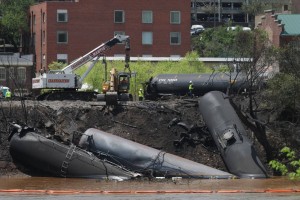Metro-North, a major commuter railroad line in the New York City metro region, reported this week that both customer and employee injuries increased in 2015.
Statistics show that total employee injuries are up by 9.5% from 2014. Meanwhile, Federal Railroad Administration (FRA) reportable injuries have increased by 1.7%.
However, injuries for customers on Metro-North increased in 2015 by 30%.
Metro-North officials said that the increase of accidents is partially caused by expanded incident reporting requirements. This was ordered by local officials after more accidents in 2013.
The statistics stated that there were 360 customer injuries on the line in 2015, which is the second most ever in a five year period. More than half of that increase was due to a major train crash in Valhalia NY, which killed six and injured 46.
FRA asked Metro-North two years ago to expand what it considers a reportable injury to customers. In the past, injury reports were anything that occurred on the train or platform. Now, customer injury statistics reflect any injuries that occur inside a terminal.
Regarding employee injuries, while the FRA reportable injuries were up only 1.7%, total employee injuries were up by over 9%. The rail line believes that could be attributed to its implementation of the Confidential Close Call Reporting System, which allows employees to report safety issues privately.
Our railroad injury attorneys in Virginia Beach are glad to see that there is a stronger emphasis at Metro-North on employee and public safety. As our attorney Richard Shapiro wrote in 72 American Jurisprudence Trials, found in most of the nation’s law libraries, on page 37, preventing railroad injuries requires strong regulations, railroad emphasis on safety and more:
“The prevention of injuries requires effectively implemented railroad safety and health programs, union support, and an appropriate level of governmental regulation. Railroads, unions, and the government share the common goal of reducing casualties in the railroad industry. In addition, all seek to ensure that injured employees are adequately and appropriately compensated. All of these are a part of national efforts to prevent injuries among railroad employees. There has been friction between the railroads and the workforce as to whether railroads are “reporting” all worker injuries or illnesses to the FRA as legally required.”
As the treatise also notes, injuries are not usually FRA reportable unless the injuries require medical attention or prescription medication.
As we have seen in some of our railroad worker injury cases, serious injuries can occur when the railroad neglects safety, such as this $825,000 settlement where the railroad worker suffered a serious injury due to a loose ladder on a train car.
